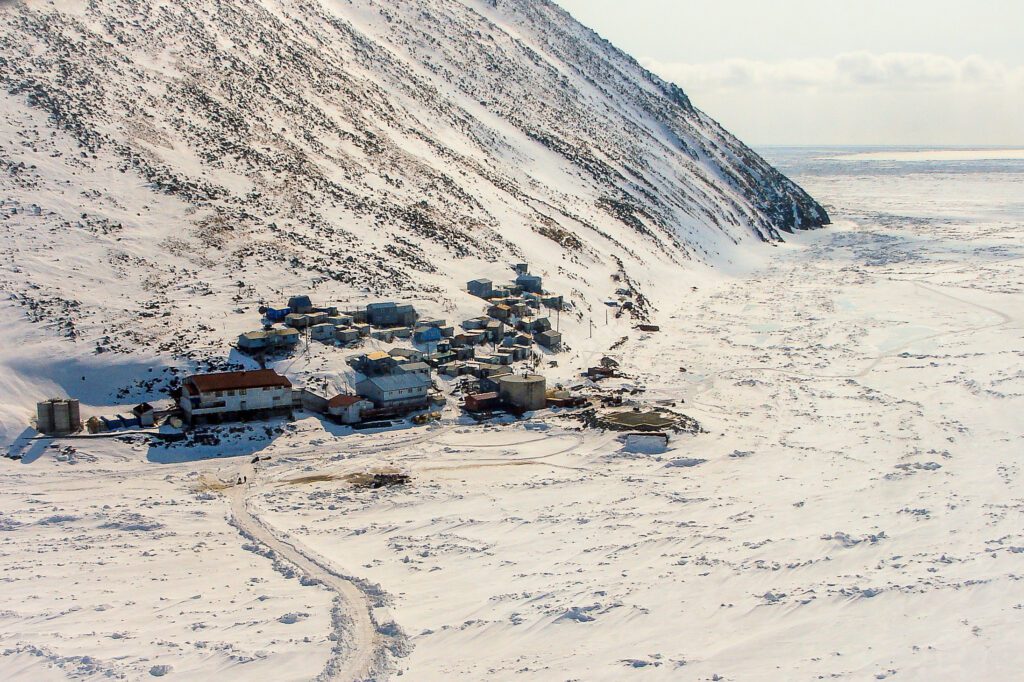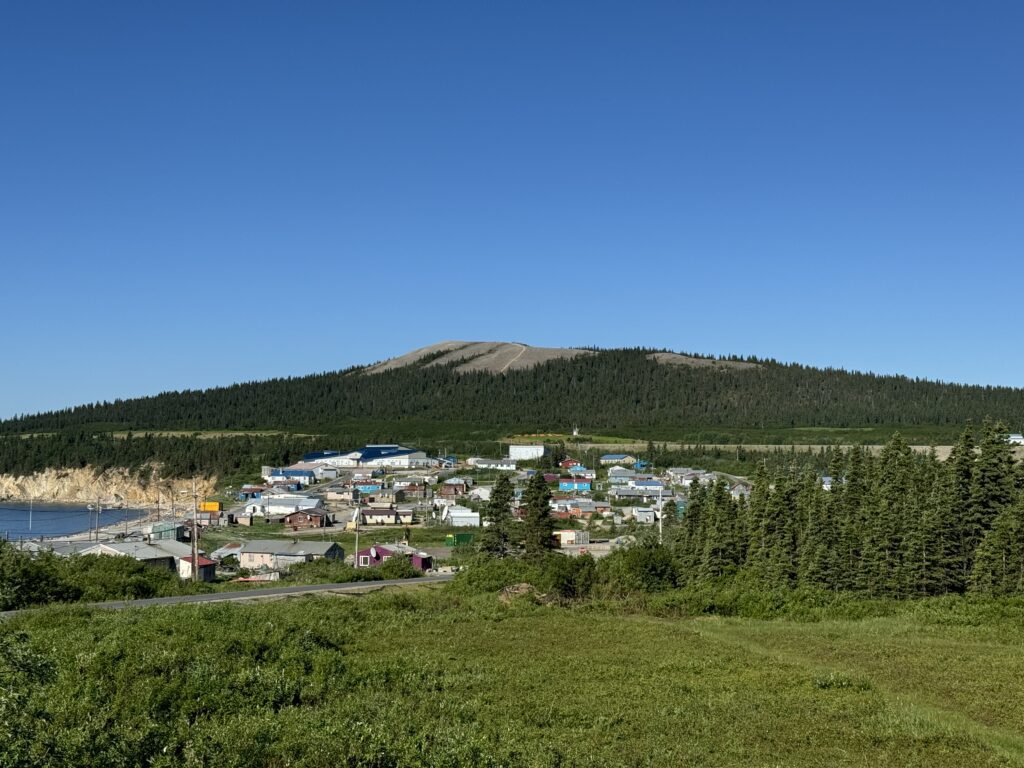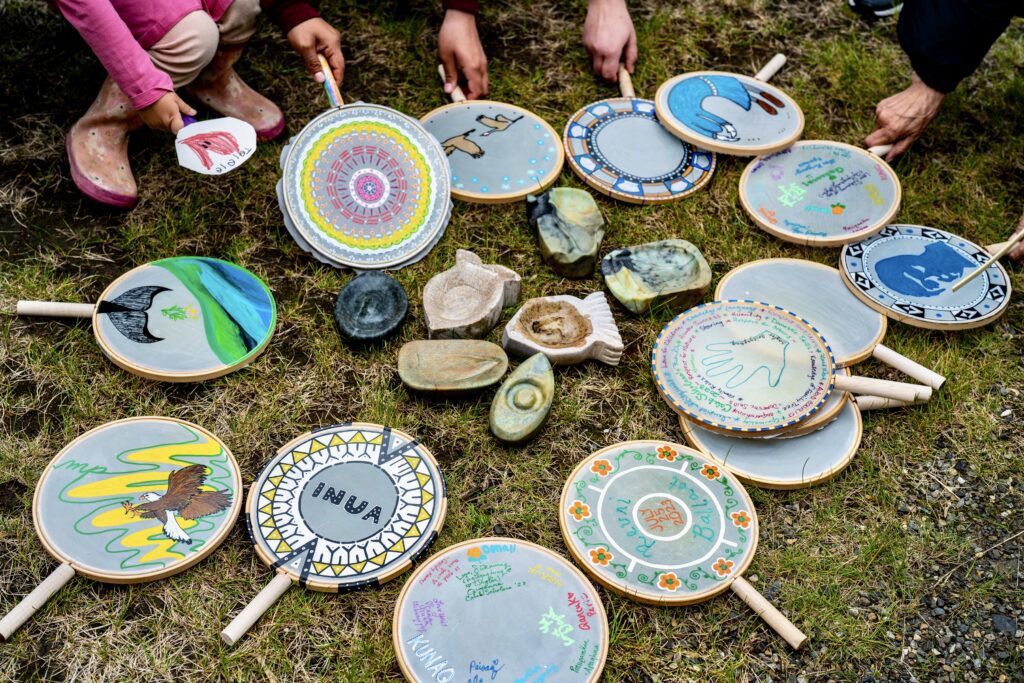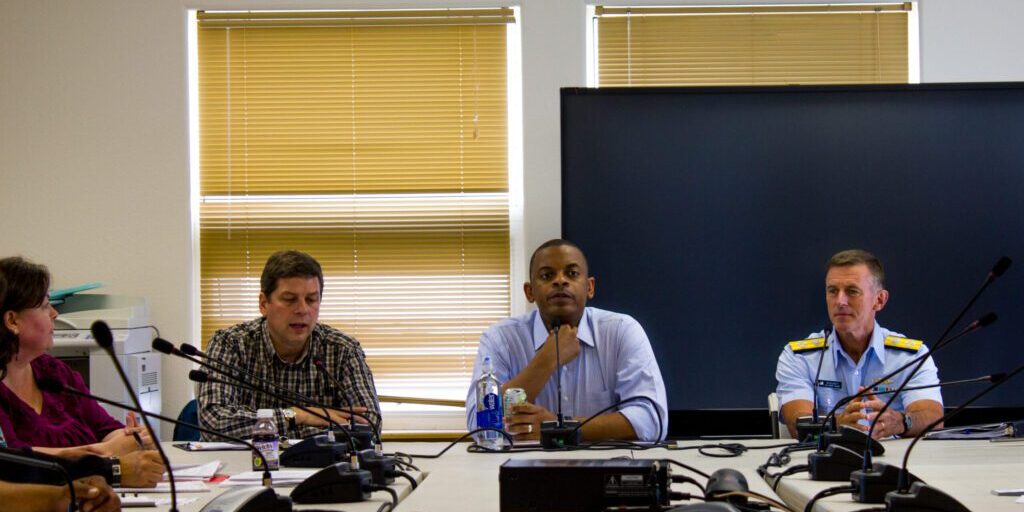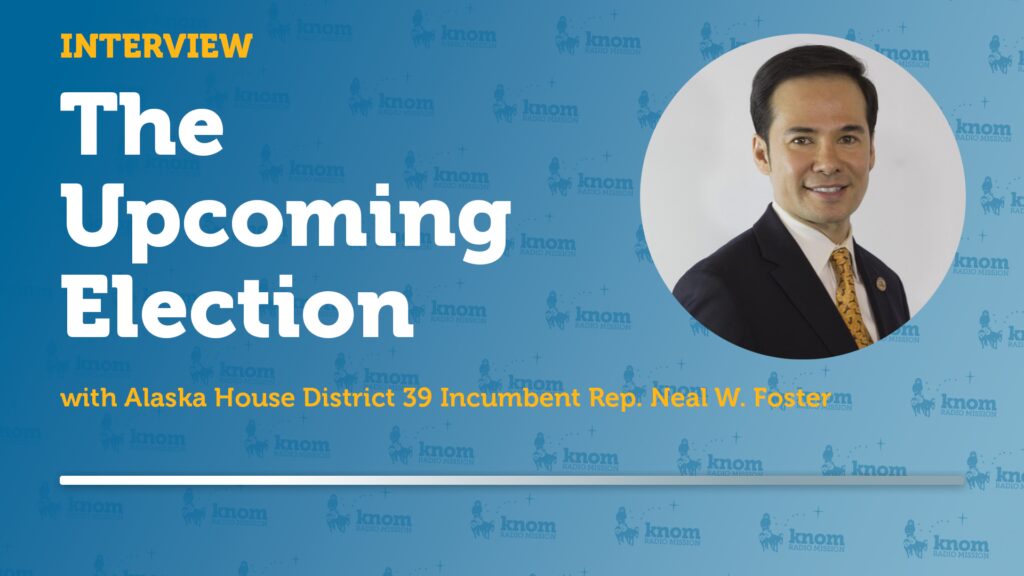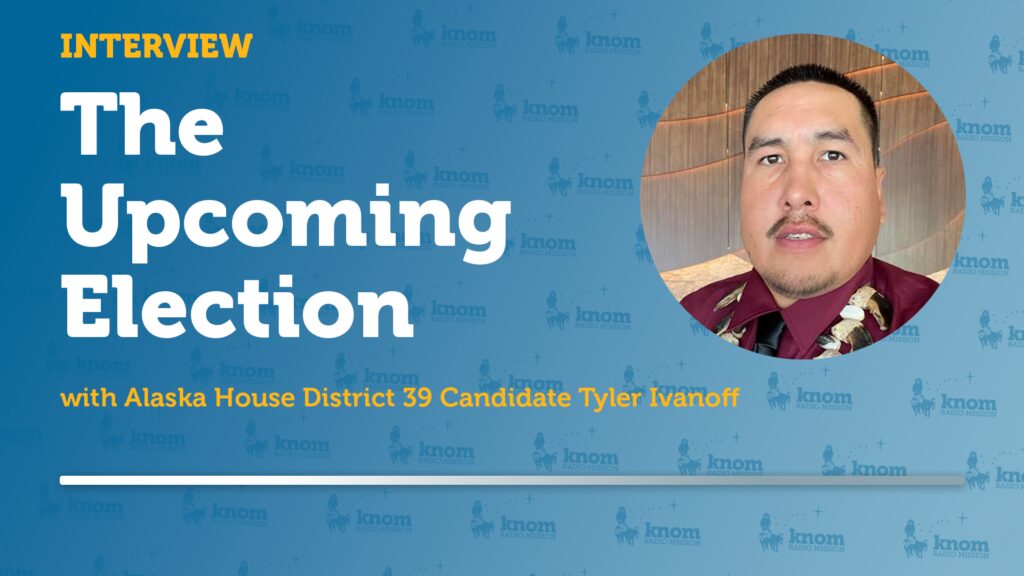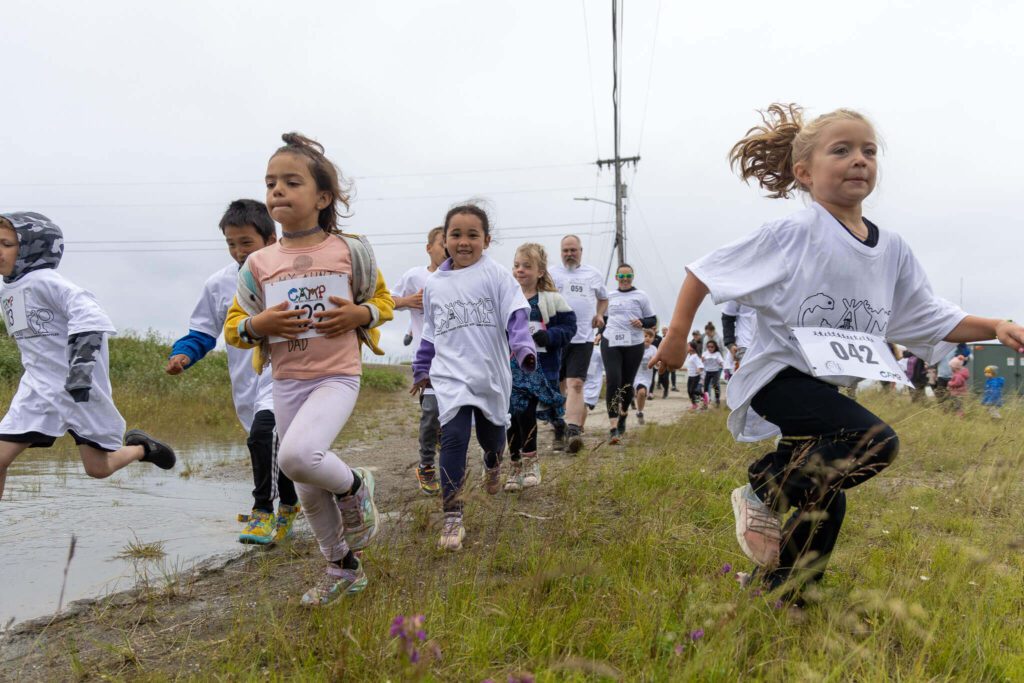Increasing Arctic traffic and a lack of emergency response capabilities—on top of increased demand on maritime and aviation resources—has become a growing concern for communities in Western Alaska.
Looking to assess those concerns, federal officials visited Nome Friday to get a first-hand account of the city’s transportation infrastructure.
Senator Mark Begich led the entourage, which included U.S. Secretary of Transportation Anthony Foxx and U.S. Coast Guard Commandant Paul Zukunft.
Begich wanted Secretary Foxx to understand Alaska’s unique transportation logistics, especially as the Federal Aviation Administration enters reauthorization and as the country develops its first national freight policy.
The U.S. is anticipating freight transportation to double over the next 35 years, and officials are drafting a strategy to deal with the demand.
“It’s going to strain our system if we don’t have the infrastructure in place,” Foxx explained. “So our goal right now is to design a system based on how freight actually moves—that would include maritime projects and ports and locks and dams and lots of things like that— and then to make the case to Congress to put the resources in place to do it.”
Begich said he also wants Commandant Zukunft to understand the region’s need for emergency response capabilities. The Coast Guard is committed to building more icebreakers—with zero environmental footprint—but as far as establishing more bases in Western Alaska, Zukunft told an audience in Nome that Kodiak will remain the branch’s northernmost operating base.
“Our biggest challenge isn’t so much where we tie the ships up, but where do we maintain them, where are we putting in parts, logistics. Then we have to look at the school systems, families, and the overseas screening that we do. But we find that it’s much more cost effective to have larger clustering of Coast Guard presence.”
Zukunft is well aware that Arctic traffic has increased by 400 percent over the past 65 years. Despite a Government Accountability Office report issued earlier this year, Zukunft said that the staggering figure does not anticipate a significant increase in Arctic shipping during coming decade. The federal government usually takes 10 years to respond to changes, Zukunft explained, and earlier action is necessary.
Later in the afternoon the Coast Guard’s jet touched down in Unalakleet. The delegation got a whirlwind tour of town, starting with the Department of Transportation garage housing a sander and heavy equipment. Then they saw ongoing construction to expand the sea-wall on the town’s southern edge—meant to slow down the aggressive coastal erosion issue threatening Unalakleet. And last came a quick visit to Norton Sound Economic Development Corporation’s fish-plant, where large, shimmering Cohos slide through an assembly line as they are gutted, washed, and packed into totes bound for Anchorage.
The quick field trips gave Zukunft, Foxx, and their entourages—replete with staffers and security details—a common point of reference when they spoke with a panel of leaders from regional organizations at the Unalakleet IRA soon afterwards.
It was not just Foxx’s first visit to Unalakleet, but to Alaska, where his department spends a good deal of its $70 billion annual budget on infrastructure projects. Being able to see how and why projects work helps his department design more effective solutions.
“It is actually the case that people are spending money on the United States having poor infrastructure,” said Foxx as the afternoon meeting was winding down. “Whether it’s time that they’re spent stuck in traffic or not able to get from one place to another because the road system doesn’t exist. It’s also just wear and tear on vehicles, so we’re paying the price already.”
And that is part of what Senator Begich says he wants from trips like this one: for national officials in Washington, D.C. to see first hand how their decisions affect remote communities in Alaska.
The Unalakleet visit was fast—less than three hours. A panel of leaders from different regional organizations like Bering Straits Native Corporation, the Bering Sea Alliance, and NSEDC spoke about topics of importance in the Bering Strait—from high fuel costs to subsistence to increased shipping.
One point repeatedly brought up was the need for officials to come more often. Kawerak president Melanie Bahnke thanked Secretary Foxx for flying across the country (he estimated he spent about 12 hours in the air, not counting stops), but encouraged him to log some time driving along dirt trails to get a more direct experience of people’s transportation needs.
“Please think about us,” Bahnke explained to the visitors, stressing the point that unless they are seeing conditions on the ground, the region’s needs can seem abstract, even imperceptible. “The fact that several of our communities don’t even have water and sewer—we’re living in Third World conditions. We’re in the most generous nation in the world. We provide humanitarian aid to other countries, and [yet] you’ve got some of Alaska’s first people, this nation’s first people still living in Third World conditions. So, I ask that you don’t forget that.”
Afterwards, there was a short period for public comments. Foxx, Zukunft, and Begich talked one-on-one with a handful of audience members, happily snapping photos. Then, with a light rain falling, staffers hustled them back on board the Anchorage-bound jet.

